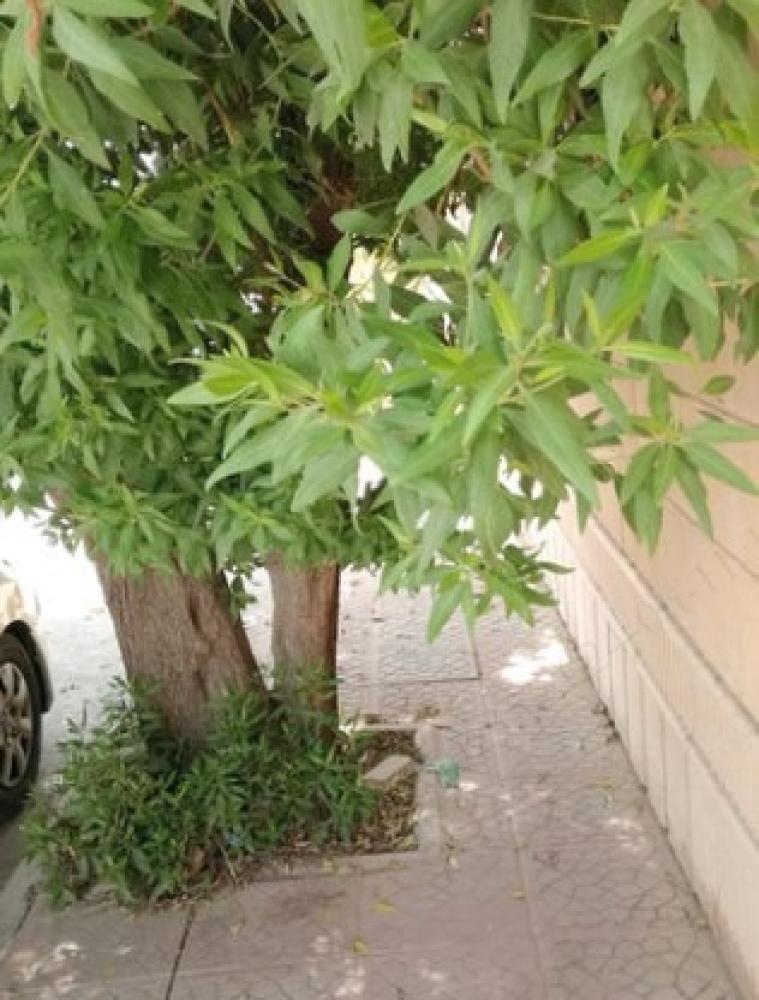Bazrum tree, damas tree , conocarpus , or cone-fruited tree In Latin : Conocarpus is a genus Vegetarian follows the species Al-Asmiya or Al-Qambritiya In Latin : Combretaceae
within rank Asians In Latin : Myrtales.
It includes two types of plants. It is native to tropical regions of the world. One of its species is a widespread coastal yak tree , and the other is restricted to a small area around the southern coasts of the Red Sea , where it grows alongside seasonal rivers .
They are dense, multi-trunked shrubs or small to medium trees cod from 1 to 20 metres.
It is evergreen, fast-growing, and bright green all year round. It tolerates dry climate and high heat in summer and cold in winter and can be raised as a shrub or tree.
The scientific name is derived from two Greek words κονος (konos), which means "cone" and καρπος (karpos), meaning fruit.
distribution
The basilica is native to the coasts of tropical America from Bermuda , the Bahamas , and southern Florida through the West Indies , and from Mexico southward on the Gulf of Mexico , the Caribbean Sea , and the Atlantic coast to Brazil , and on the Pacific coast from Mexico to Peru , including the Galapagos Islands . And on the coast of West Africa from Senegal to the Democratic Republic of the Congo . It is rarely introduced elsewhere. [4] Sunni damas are native to Somalia And Yemen , and is grown in the East And North Africa And the Arabian Peninsula . [5]
Its types
· Conocarpus lancifolius ( in Latin : Conocarpus lancifolius)
· Conocarpus erectus ( in Latin : Conocarpus erectus)
the use
1. Street beautification, as it is planted on both sides of roads and streets, which gives a beautiful general view of the city and adds green color to its streets throughout the year.
2. Decorating gardens and parks. This is done by planting trees on the sides of public parks, main roads, and entrances, where they are cut and shaped into squares, pyramid shapes, or any desired geometric shape.
3. Strong wind buffers and reducing soil erosion:
Conocarpus is used in open areas to provide protection for the rest of the farms and tomato orchards from strong winds that may damage plants that cannot resist the wind and also work, because of their strong roots, to hold the soil together.
1. Providing shade, as it provides shade due to its many branches in the summer.
2. Making fences and fences, where the conocarpus is planted side by side in regular rows, followed by cutting and shaping to finally form a wall or fence. Also in defining the garden and dividing it into parts.
Advantages
1. Evergreen and bright all year round.
2. Fast growing and tolerates cutting and geometric shaping.
3. It tolerates dry climate, high temperatures in summer, and low temperatures in winter.
4. Its taproot roots are deep, which allows it to withstand drought.
5. Resistant to diseases and low infestation with agricultural pests.
6. Easy to cultivate and propagate, and cheap in price compared to other plants.
Damages
Damage to the infrastructure, and its roots have the ability to penetrate, break, and damage pipes, even though they are evergreen trees and have a role as windbreaks. Also, the “Bazromia” plant causes damage to the infrastructure and water tanks.
Other names
It is called the Bazrumi tree or the Damas tree in the Gulf countries, and the Galab tree also in Sudan And Somalia .

